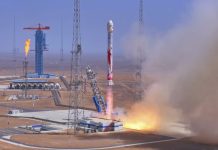DM Monitoring
WUHAN: China’s manned space program has entered the mission preparation stage with the selection of a new group of 18 reserve astronauts.
According to the China Manned Space Agency (CMSA), the reserve astronauts, including one female, have been selected recently from 2,500 candidates. Among them are seven spacecraft pilots, seven space flight engineers and four payload experts.
Flight engineers and payload experts have been selected for the first time as reserve astronauts to meet China’s space station construction needs. The mission preparation stage is not only expected to deliver more scientific research output but also boost the development of commercial space programs, international cooperation and popular science education, said Hao Chun, director general of the CMSA, at a space forum in Wuhan, central China’s Hubei Province, on Tuesday. He noted that based on the principles of openness, fairness and justice, China will pay attention to the layout planning in fields of material supply, application payloads, micro-satellites release, in-orbit maintenance, and space tourism, and gradually establish proper models for other parties to participate.
The completion of the space station will provide a broader scope for commercial space development and commercial operation can be a beneficial supplement of the station’s functioning, he added. China’s space station, expected to be completed around 2022, will operate in the low-Earth orbit at an altitude from 340 km to 450 km for more than 10 years, supporting large-scale scientific, technological and application experiments.
After the maiden flight of the Long March-5B that kicked off station construction, the core module and two lab capsules will be launched for assembly in orbit. Four manned and four cargo craft will also be launched, according to the CMSA.
The core module of the station, named Tianhe, is currently the largest spacecraft developed by China. Besides, the first lab capsule, named Wentian, will be mainly used for scientific and technological experiments, as well as working and living space and shelter in an emergency.




